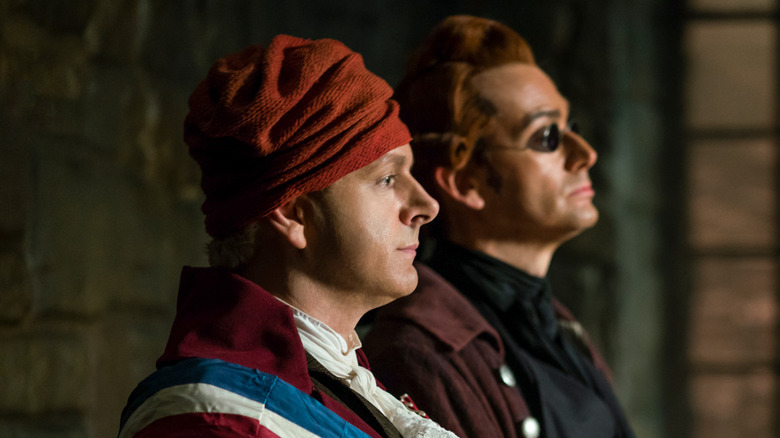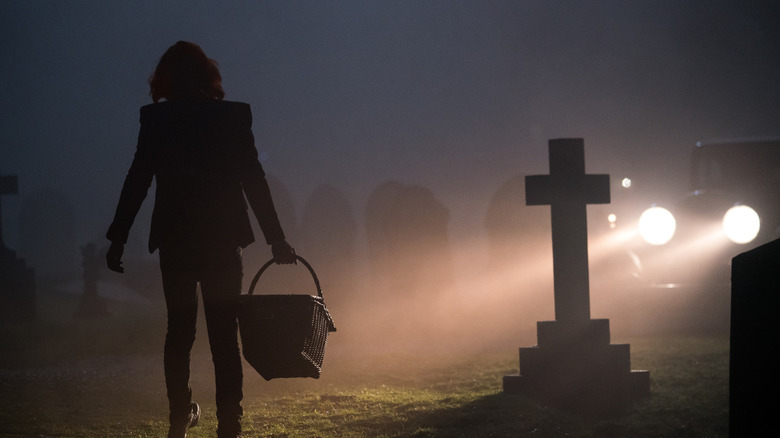Good Omens S2E3: Yes, Grave Guns Were A Real Thing
Contains spoilers for "Good Omens" Season 2 Episode 3 – "Enter Title Here"
Grave robbing is a dangerous business. It's not for the squeamish or for the faint of heart ... or for people who would rather not be shot at because as it turns out, that's totally a thing that can happen. In Season 2 of "Good Omens," Prime Video's live-action adaptation of Neil Gaiman and the late Terry Pratchett's divine comedy novel of the same name, viewers are treated to a gruesome stroll down memory lane in which a budding resurrectionist encounters a cemetery gun. Referred to as a "grave gun" by Aziraphale (Michael Sheen) during the sequence's narration, the ancient weapon fires off a single, lethal bullet that ends Wee Morag's (Julie McLellan) life.
Believe it or not, "Good Omens" didn't invent cemetery guns. While they absolutely sound like the sort of gothic madness that Gaiman would create, cemetery guns are, or at least were, very real weapons that grave keepers used in the 1800s and 1900s to prevent corpse theft. The weapons were brought into fashion by an epidemic of grave robbing brought upon by the medical community's insatiable need for cadavers to study. And, somewhere between irony and poetry, the cemetery guns often led to the very things that resurrectionists were attempting to steal.
Cemetery guns: ye olde security systems
So what is a cemetery gun, exactly? The one that appears in "Good Omens" barely nabs a split second of screen time in the pitch-black dead of night, so it can be difficult to digest visually. Pictures this — cemetery guns share a large percentage of their architectural DNA with flintlock pistols. Unlike flintlock pistols, however, cemetery guns are mounted on swiveling stands that allow them 360 degrees of maneuverability. On that note, cemetery guns are unmanned, with their triggers connected to a string of strategically placed tripwires.
No, these weapons were not stationed next to the decaying remains of loved ones all day long. Grave keepers would place them in the same darkness that obscured a clear view in "Good Omens" because it prevents potential resurrectionists from planning a safe route during the day under the comforting clarity of the sun.
Now, cemetery guns can't reload themselves, nor can they aim ... at all. Grave keepers relied on the initial shot to strike true. Barring fatal fire, the cemetery guns were loud enough to alert sleeping grave keepers to the action happening onsite, at which point they could come to the aid of the dead people, just like they did in "Good Omens." It would be pretty clever, actually, if it weren't so depressing.
"Good Omens" is now streaming on Prime Video.

